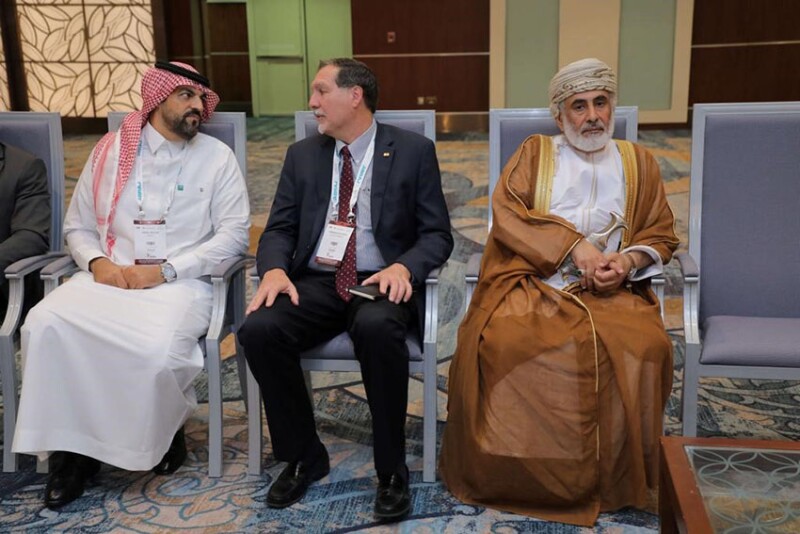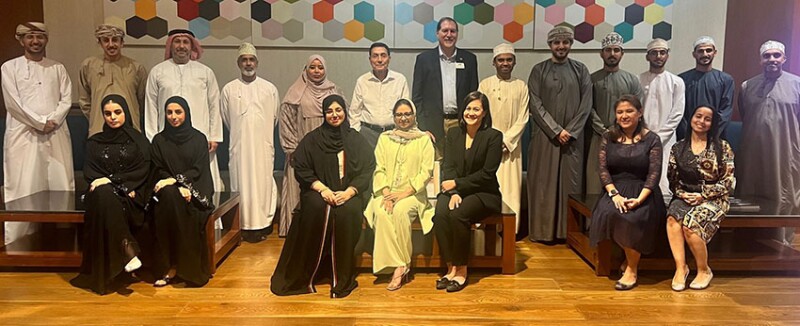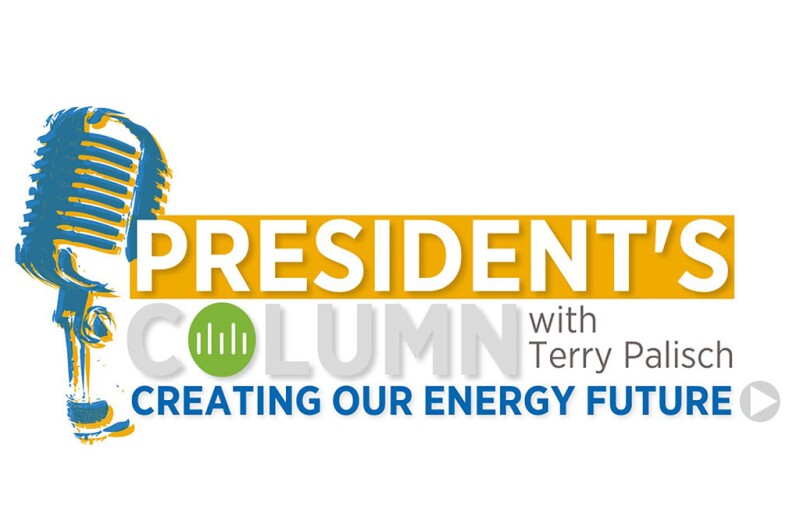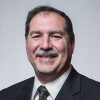In this podcast episode, Terry Palisch talks about the impact of the energy transition on the industry and technology and how SPE is helping its members adjust to the shifting landscape. This transcript is an excerpt from the podcast episode. Listen to the full episode here.
I’m Trent Jacobs, JPT senior technology editor, and welcome to the President’s podcast. Today I am very happy to be talking with 2024 SPE President Terry Palisch. He’s going to be talking to us about the impact that the energy transition is having on the industry and technology and how SPE is helping its members adjust to the shifting landscape.
I am glad to be here with you, Terry. Thank you for joining us. Can you set the scene for me a little bit by explaining a concept that you mentioned on your last podcast episode, this is the energy trilemma … tell us more about that.
Thank you, Trent. I am excited to be talking to you today. Let’s start with the building blocks. Energy is the building block of all life: human beings need chemical energy, and in our everyday lives we need energy. Energy essentially drives everything, and our population is growing. We expect by 2050 to have another 1 to 2 billion people on the planet, or another 20–25%, and at the same time over two‑thirds of our world population live in some form of energy poverty.
Currently, 80% of the energy supplied to the world comes in the form of coal, oil, and natural gas, commonly called fossil fuels. That percentage has not changed appreciably for decades. The public is still demanding a reduction in emissions. That represents what a lot of people call the trilemma. How do we as a society meet the world’s energy needs for affordable and accessible energy that is reliable and secure, but also becoming evergreen and decarbonized. That is what they call the energy trilemma. I think it is more the energy opportunity, and I say that because I believe it’s the energy opportunity for our industry. I believe we are the best suited to solve the energy trilemma and we are solving it as we speak.
Let’s open that up a little bit. From where you are sitting, what do you see the industry doing to respond to the trilemma?
Our industry has been meeting the world’s energy needs for decades. Oil and gas along with coal helped usher in the Industrial Revolution. We developed new technologies, things that we never saw coming, like deepwater and shale oil and gas, or unconventional development. The ability to take horizontal wells and put multiple fracture stimulations in them completely changed the landscape in the US and North America. Right now, natural gas is plentiful; we built LNG import terminals before the shale revolution and now we are building export terminals.
The US has become energy independent. What is interesting is that emissions have actually decreased during this time frame because of the ability to switch from coal to natural gas-fired power plants. The key aspect to understand is that we are going to continue to need more and more energy, so we must continue to develop new technologies. Technologies that we have not even thought of because oil and gas resources continue to be harder and harder to find and harder to extract. There are many reserves out there for which we need the technology to extract.
At the same time, though, I think it is worth noting that we continue developing ways to reduce our carbon footprint and carbon intensity. There are tremendous efforts to reduce flaring and methane emissions. A report by the EPA discussed how emissions from methane have been reduced over the past several years. We are making an impact, and then, of course, we have the new areas like carbon capture and storage and geothermal energy. This is why I like to call it our industry’s energy opportunity.

I think the engineers out there hear about these things and see opportunities to build and create something new that works towards what are now global goals. Let’s zoom in a little bit more. We talked about the societal issue and how industries are looking at it. Now take us through the lens of what SPE is doing to keep members updated about the newest technology trends and important industry developments that are really shaping careers.
Let’s start with the mission. SPE just updated our mission statement as a part of the Strategic Plan and it is a mouthful. Our previous mission statement started with ‘to disseminate technical information,’ which is still a big part of our mission, but we start the new mission statement with ‘to connect.’ My good friend and 2022 SPE President Kamel Ben-Naceur put it this way: Our mission is to connect our members with technology, connect our members with other members for collaboration, and connect our members with our external stakeholders. We are about connecting and while there are many ways that we connect with our members and with new technology, I would like to key in on just one of those—our events.
SPE events go a long way to connect our members with technology, other members, and external stakeholders. SPE has about 100 events every year. The majority of events are in North America, Middle East, North Africa, and Asia, which are where the majority of our members reside and there is tremendous oil and gas potential. We also have a large number that are in Europe, Africa, and Latin and South America. Our goal is to continue linking the global network of people to technology and collaboration.
Approximately three-fourths of our events are conferences or workshops, and the remaining are forums, symposia, or summits. There are various formats for collaboration and a wide range of topics, from traditional petroleum engineering topics like drilling and completions and reservoir, to energy transition topics like carbon capture and geothermal. We are even starting to see these events embedded in each other; for example, while we may go to the hydraulic fracturing technical conference, there will be a session that discusses decarbonization or the electrification of frac fleets. That is how SPE keeps our members connected to technology and new developments.

I like what you said. It resonated with me when you said linking global networks together because in my own experiences of attending SPE events, I see that. I see people from opposite ends of the world meeting up for the fifth or tenth time and exchanging ideas in real life. I want to ask about your experiences because you have been on the move recently visiting SPE sections and members from around the globe and participating in SPE events and conferences. What do these conferences mean to you, why is this so important?
It is important for me to attend as many as I can because SPE events exist for the sole purpose of connecting our members with technology and other members to collaborate and network. These events are only possible because of the dedicated volunteers and the SPE event staff. Another benefit is the volunteer opportunities available whether it is on a program committee, leading a section, being a co-chair, writing a paper, or making a presentation at a workshop. It gives us a chance to display our technology, a chance to network, a chance to work on our soft skills, and is the cornerstone of professional development. It is a big part of my experience. I think that attending and participating in these events is really one of the critical pieces of our ability to create our energy future.
Tell us about where you have traveled recently. What are some of the events you have attended and share with us some of the takeaways.
I just got back from a trip to the SPE International Hydraulic Fracturing Technology Conference (IHFTC) in Muscat and Offshore Europe in Aberdeen, which celebrated its 50th anniversary. Offshore Europe is a critical event for SPE and the region. We had more than 800 exhibitors and 30,000 attendees over 4 days including the Honorable Graham Stewart, UK Minister of State for Energy and Security Net Zero, and Gillian Martin, the Scottish Minister for Energy and the Environment. The IHFTC was the third edition held in Oman, which is an offshoot of our successful Hydraulic Fracturing Technology Conference (HFTC) in The Woodlands, Texas, held every year. There were over 700 attendees and 126 companies from 35 countries. The Oman Ministry of Energy and Minerals was present, and PDO was the main host. Both of those are important to the respective regions to help solve local problems. One of our core values is global reach and local relevance, so we bring together a global audience to work on something that has local relevance like Offshore Europe and the IHFTC.
How are the topics for the technical programs picked?
It starts with an idea. A lot of ideas are driven by staff who see what is going on in the industry and what are the hot topics. It might also start with a board member, one of the technical directors, advisory committees, or members in a region.
For example, I was recently in Tunisia where the section was just reestablished. They are excited about bringing unconventional technology to the region; the question is what kind of event we can develop to help them.
Once the topic is discussed, the organizers work with SPE staff to come up with the timing and the location and make sure it does not conflict with the event calendar, and of course, look at the profit and loss potential—the goal is to have positive profit or at least not lose money. The event request is then taken to the SPE Board of Directors, the Technical Content Committee signs off on it, and then you are off and running.
Will you talk a bit more about the different formats of these events?
Most do not understand the differences between various events. Conferences are the largest of our events and the most common format. A conference is typically made up of technical papers, panels, and an exhibition. It is typically a larger event with thousands of people based on a single topic or multiple topics. For example, multidisciplinary conferences like the Annual Technical Conference and Exhibition (ATCE) is our flagship member event, and the Offshore Technology Conference is one of our multisociety events. We also have events like the HFTC which is a single topic.
A workshop is the other end of the spectrum. It does not have technical papers; it is presentations only and there is typically not an exhibition. The goal of a workshop is to dive deeper into a single topic, or perhaps multiple topics in a single region or basin. A workshop is limited attendance to promote engagement and networking, and it is a single track. Workshops are gaining popularity because you can work on a problem and the information is very timely since there are no papers required. We often get people who present material that they could not have released in a paper.
A symposium is in between a conference and a workshop, a starter in a known specific topic. It can have technical papers, panels, and minimal exhibition. A lot of section events are symposia and turn into a workshop or a conference later. Forums sit by themselves. It is a way for 50 to 75 technical experts, or subject matter experts, to get together and discuss a futuristic problem or topic. It is an application-based event and there is limited note taking. It is about thought leadership.
A summit is typically a smaller topic with a few members to begin talking about a topic.
I think it’s important to understand those differences so when you go to the events calendar you know what to expect. Even though they have similar names, they all have different personalities.
I like that these are conferences by people for people so they feel a little bit like people. Maybe to wrap up, could you talk about what SPE is doing to stay fresh and continue to enhance the best experience that we can at these different events.
First and foremost, it starts with SPE staff. The events team does a magnificent job of staying on the forefront of topics and delivery mechanisms as well as the board members, particularly the technical directors and Technical Content Committee. Everyone is always on the lookout for ways to improve—whether it is improving the content, improving delivery of that content, or maybe just the overall experience. I think SPE has a great reputation for putting on the best events focused on technology and networking.
We have an initiative underway to improve ATCE called the ATCE Reimagined Group. It is made up of board members, staff, and an external resource. We are looking at how to revamp the Society’s flagship event.
ATCE has a rich history as our premier event, but members have said we need to revamp it and they are right. Our next ATCE will be in New Orleans in 2024. It will mark the 100th anniversary of ATCE and our goal is to lay the foundation for the next 100 years. Plan on coming to New Orleans. I think it will be a lot of fun and very informative.
The other thing we do is partner with other societies whether it is for the Unconventional Resources Technology Conference (URTeC) or the International Petroleum Technology Conference (IPTC) where we join up with SEG, AAPG, and EAGE. We are always looking for new ways to deliver enriched content and to expand the tent into related technologies. An event took place earlier this year with the University of Houston alongside AAPG on carbon capture and storage. There is an event coming up this month with Geothermal Rising, a geothermal workshop in Colorado. We want to be known as the go-to place for events that promote technical exchange, thought leadership, networking, and provide a second-to-none experience.

That is exciting news about ATCE. This is a show that presents some of the best and most impactful papers that benefit the oil and gas industry. Can you tell us what is coming up in your next episode?
Next month we are going to continue our discussion about this connection, connecting our members to technology and each other, and talk about the importance of local sections. I think for most members the section is what they think of when they think of SPE. It gives great opportunities for volunteering and, really, all the important aspects of what we need to do and what we can do to create our energy future. I am looking forward to it and I hope everybody will be able to join us.


